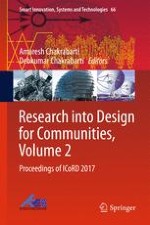2017 | OriginalPaper | Chapter
Idea Inspire 3.0—A Tool for Analogical Design
Authors : Amaresh Chakrabarti, L. Siddharth, Madhuri Dinakar, Megha Panda, Neha Palegar, Sonal Keshwani
Published in: Research into Design for Communities, Volume 2
Publisher: Springer Singapore
Activate our intelligent search to find suitable subject content or patents.
Select sections of text to find matching patents with Artificial Intelligence. powered by
Select sections of text to find additional relevant content using AI-assisted search. powered by
